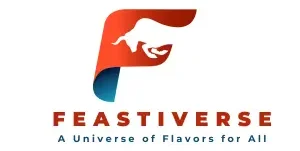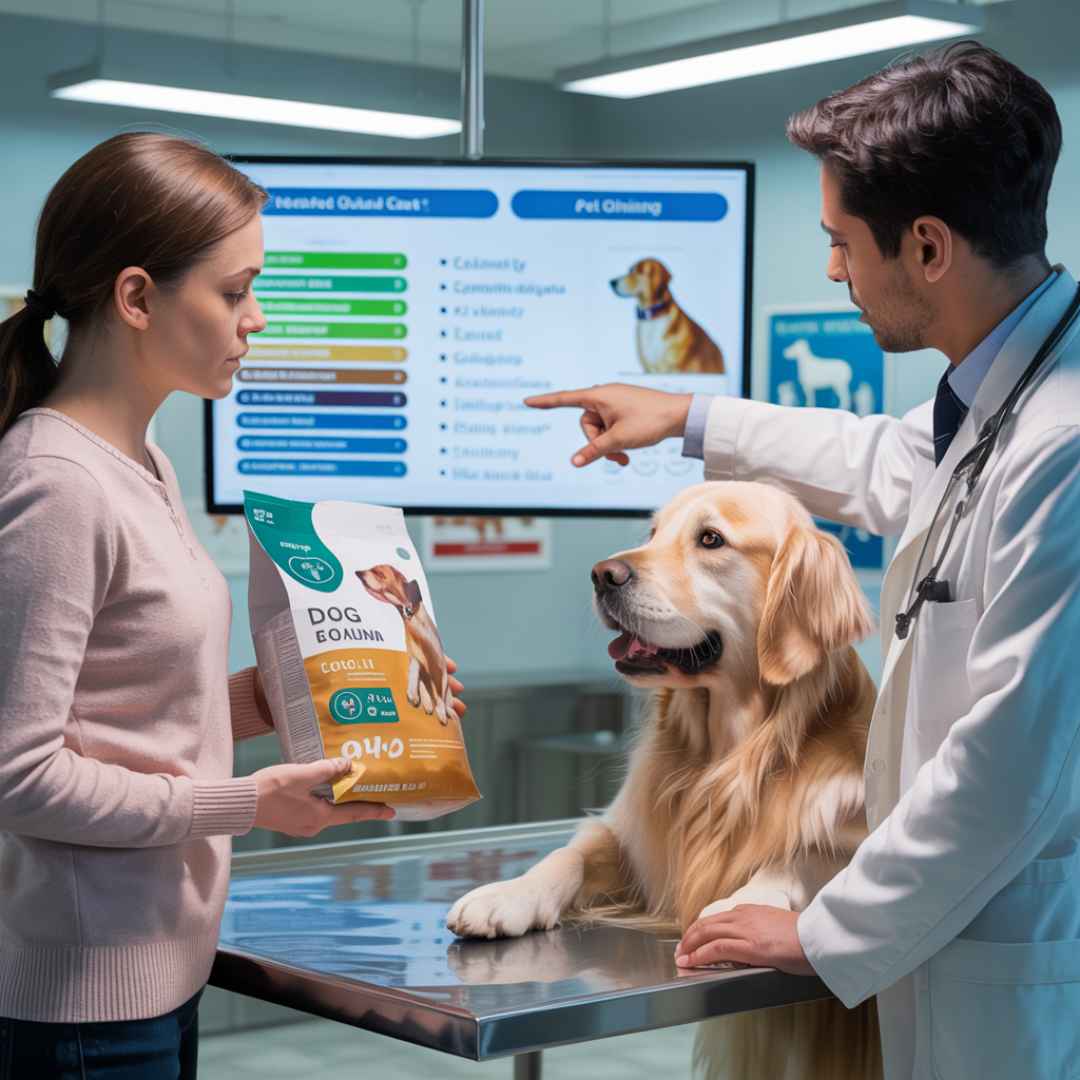You’re looking for the answer to the question: Is Rachael Ray dog food bad for dogs? Rachael Ray’s Nutrish dog food has faced multiple lawsuits alleging contamination with harmful substances, including glyphosate. Additionally, some of its grain-free formulas have been linked to dilated cardiomyopathy (DCM) in dogs due to certain ingredients.
While the company maintains confidence in the quality and sourcing of its products—and many owners report positive experiences—pet owners still question whether Rachael Ray dog food is bad for dogs due to ongoing concerns about ingredient quality, potential allergens, and reports of adverse reactions, such as heart and digestive issues. These factors have made some dog owners cautious about choosing this brand.
Rachael Ray Nutrish Dry Food
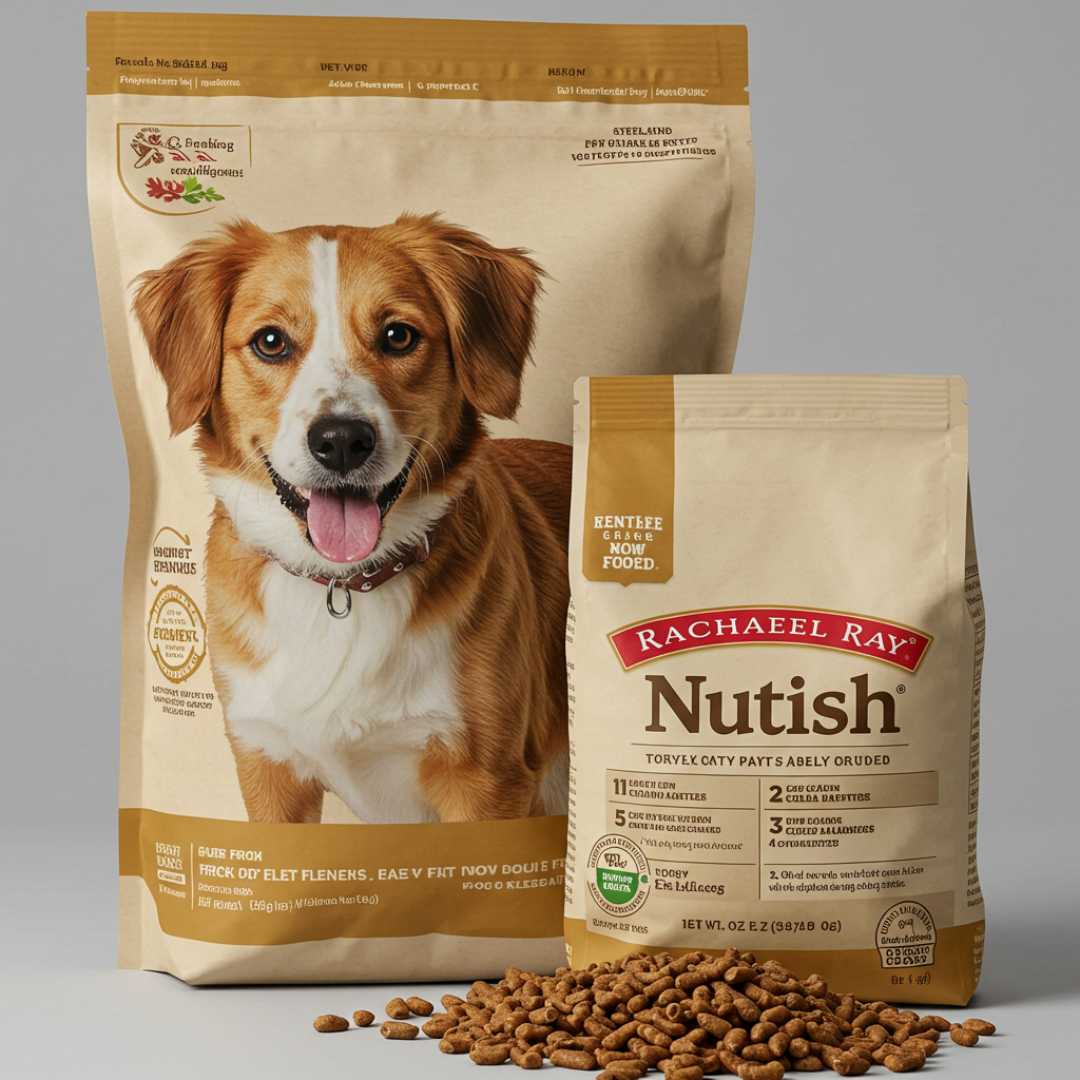
Nutrish Main Food Line
The main Nutrish dry food product line offers four flavors, although the recipes are remarkably similar, with only the first two ingredients differing in most cases.
The Vegetable Recipe and Original Chicken varieties contain soybean meal, chicken, whole grain wheat, whole corn, dried peas, and other common ingredients. Most of these recipes follow the same pattern: a named meat source as the first ingredient, followed by a series of low-quality fillers.
The Pea and Brown Rice recipe, like the Original Beef & Chicken recipe, starts off promising with named protein sources (beef and beef meal). However, just like the other recipes in this line, it is also heavily loaded with fillers.
The Brown Rice & Venison, Real Turkey, and Real Salmon, Veggies & Brown Rice recipes follow the same trend. Due to the number of Rachael Ray dog food ingredients listed after the meat sources, there is evidence of ingredient splitting in these recipes—meaning that, despite the ingredient order, there are likely more fillers than real meat.
However, it’s worth noting that these recipes do use natural preservatives such as vitamin C and rosemary extract, which is a positive aspect.
Nutrish Zero Grain Line
The Nutrish Zero Grain line is part of the Rachael Ray Nutrish brand, designed for dogs with grain sensitivities. It comes in two flavors: Chicken & Sweet Potato and Salmon & Sweet Potato.
The chicken recipe features familiar ingredients such as chicken meal, fish meal, chicken, pork meal, beet pulp, flaxseed, peas, and potatoes. However, things get tricky when you look more closely at the salmon flavor. Contrary to what its name suggests, this recipe also contains turkey and chicken by-products in addition to salmon and vegetables.
This is concerning because many pet owners assume it’s a safe choice for dogs with poultry allergies—when in fact, it isn’t.
Large Life Line
The Large Life line is formulated for medium and large-breed dogs. It claims to support joint health and provide the energy needed for bigger dogs to thrive. This line is available in two recipes: Hearty Beef with Veggies & Barley and Savory Chicken & Brown Rice.
These formulas include chondroitin, glucosamine, and sulfate, which research suggests may help reduce joint wear and tear and support overall mobility.
Nutrish Dish Line
The Nutrish Dish line is marketed as an all-natural dog food packed with vegetables and fruits. It comes in two main flavors: Chicken & Brown Rice with Fruit and Vegetables and Beef & Brown Rice with Fruit and Chicken.
These recipes feature real meat as the first ingredient and include a blend of dehydrated peas, grains, and vegetables. However, despite its name, the beef recipe is not suitable for dogs with chicken allergies, as it also contains chicken meal.
Nutrish Peak Protein Line
The Rachael Ray Nutrish Peak Protein safety line is a grain-free, high-protein dry dog food range featuring recipes such as Open Prairie with Beef, Lamb & Venison. The main selling point of this line is its 30% protein content, which is higher than other Rachael Ray Nutrish dry food formulas. It’s marketed as gluten-free, grain-free, and filler-free—but like the Limited Ingredient line, this claim is only partially true.
The first 12 ingredients include three different types of peas, which clearly indicates ingredient splitting. The heavy use of peas is also concerning, as excessive pea consumption has been linked to diet-associated dilated cardiomyopathy (DCM) in dogs.
Another recurring issue with this recipe, and others from this brand, is the inclusion of a significant amount of chicken meal—listed as the second ingredient—even though the product name doesn’t mention chicken at all.
This can be misleading and potentially harmful for dogs with poultry allergies, especially since the highlighted meats like lamb and venison, printed prominently on the front of the bag, appear much lower on the ingredient list.
Nutrish Little Bites Line
Rachael Ray’s Little Bites line is designed for small dogs and comes in just one flavor: Chicken & Vegetable. Like most Rachael Ray recipes, the first ingredient is a named meat source—chicken—followed by soybean meal, beef meal, sorghum, corn, and chicken fat.
Nutrish Bright Puppy Line
As the name suggests, the Nutrish Bright Puppy line is formulated for growing puppies and is available in only one flavor: Chicken & Brown Rice. We appreciate that it includes essential fatty acids such as EPA and DHA, which are important for healthy brain and vision development in puppies.
Limited Ingredient Line
The Limited Ingredient line comes in one flavor — Lamb & Brown Rice — and contains only seven ingredients. The packaging claims that the recipe is free from corn, soy, and fillers. While the first two claims are true, it is not entirely filler-free.
As with other Rachael Ray recipes, there is evidence of ingredient splitting — the second and third ingredients are both types of rice, followed by peas and two additional grains. Furthermore, this recipe doesn’t contain real meat, but rather meat meal as its main protein source.
Rachael Ray Nutrish Wet Food
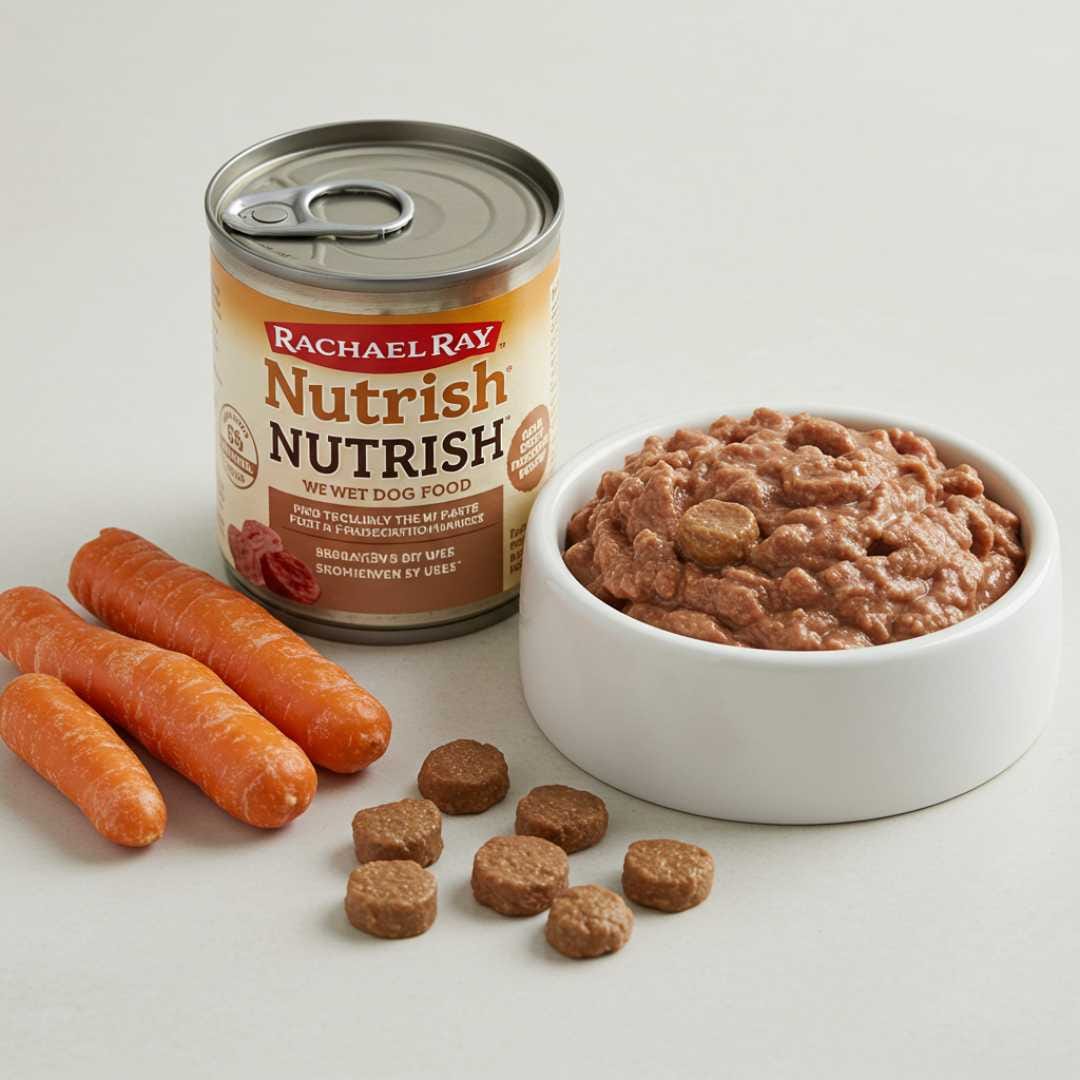
Nutrish Super Premium Line
The Nutrish Super Premium line is a chunky-style wet dog food available in single-serve bowls and multipacks. These foods are made without soy, corn, or wheat and come in five flavors with fun names like Beef Stroganoff and Chicken Meatballs.
This line can be served as a complete meal or used as a food topper to enhance your dog’s kibble. What sets the Super Premium range apart is its stew-like consistency and the fact that it’s free from artificial poultry flavors, by-products, and artificial preservatives.
The collection includes five recipes, featuring grain-free options, formulas for dogs with sensitive digestion, and even a weight management variety.
Nutrish Peak Protein Line
The Rachael Ray Nutrish Peak Protein safety line is Rachael Ray Nutrish’s answer to the grain-free, gluten-free, high-protein wet food market. This wet food range is currently available in a variety pack featuring three flavors: Chicken & Lamb, Chicken & Beef, and Chicken & Duck—all served in a rich, flavorful gravy.
Chunks in Gravy Line
The Chunks in Gravy line features four tender, meaty entrées made with hearty chunks of meat and whole vegetables in a rich gravy—reminiscent of a savory pot pie filling. The line offers options for beef, chicken, and turkey lovers. However, like many Rachael Ray recipes, these varieties are not suitable for dogs with poultry allergies due to the inclusion of chicken liver.
Rachael Ray Dog Treats – Real Meat
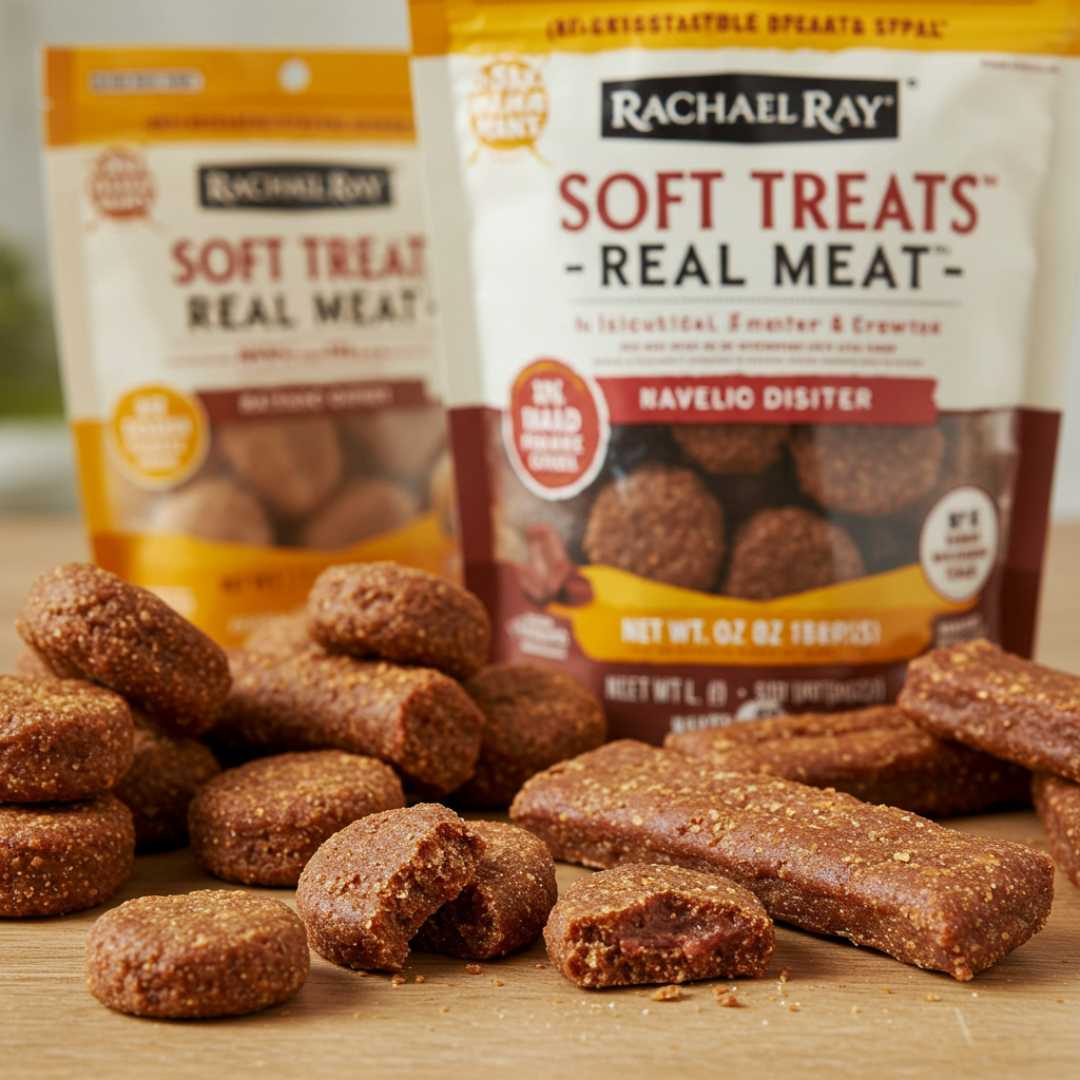
Rachael Ray offers five soft treat recipes across two lines: Nutrish Bark and Nutrish.
Nutrish Treats
The Nutrish Treat line includes three recipes: Burger Bites with Beef & Bison, Savory Roasters Chicken Recipe, and Turkey Bites Hickory Smoke Bacon Flavor. Like most of Rachael Ray’s dry dog food recipes, meat is the first ingredient, and the treats use only natural preservatives such as vitamin A and rosemary extract. The packaging also proudly claims that these treats are grain-free.
However, the Turkey and Chicken recipes rely heavily on chickpeas as the second and third ingredients, respectively. This may raise concerns for some pet owners, as recent studies suggest that diets high in legumes, like chickpeas, may be associated with an increased risk of diet-associated cardiomyopathy (DCM) in dogs.
Nutrish Bark Treats
The Rachael Ray Nutrish Bark line features jerky-style treats available in two recipes — Chicken and Beef — both enhanced with peanut butter and bacon flavors. Unlike other soft treats in the brand, the Bark line is not grain-free, though it remains free from artificial colors, artificial preservatives, and nutrish flavors. Similar to other Nutrish Rachael Ray dog treats, these also include chickpeas in their ingredient list.
Soup Bones
The Soup Bones line features bone-shaped soft chews available in both regular and mini sizes, making them suitable for dogs of all shapes and sizes. They come in five fun flavors, including Rice & Turkey and Barley & Beef.
Bites
The Nutrish Bites line is available in two tasty flavors: Turkey Bites with Bison & Beef and Turkey Bites with Bacon.
Savory Roasters
Nutrish Savory Roasters are offered in a single grain-free flavor — Savory Chicken Roasters — made with real chicken as the first ingredient.
Concerns and Precautions
Before buying Rachael Ray Nutrish dog food, there are several important things you should know.
Meat is not always the first ingredient
While meat is listed as the first ingredient in all Peak Protein Line recipes, Super Premium Line foods, and all gravy recipes, this isn’t the case across the board.
For instance, the Nutrish Little Bites recipe lists chicken fat as the first ingredient, and the Limited Ingredient range features lamb meal rather than real lamb.
Fillers are common in many recipes
Many Rachael Ray Nutrish formulas include fillers like ground whole corn, tapioca, pea protein, and wheat among their top five ingredients.
In fact, some recipes contain more fillers than primary protein sources. For example, the Open Prairie Peak Protein Dry Recipe lists venison as the 13th ingredient, while tapioca appears as the fifth.
Other fillers found in the top ingredients of certain Rachael Ray foods include sunflower meal and corn protein concentrate. Additionally, using multiple fillers and variations of the same protein source may be a form of ingredient splitting, giving the illusion that meat is more prominent than it actually is.
Some recipes contain controversial ingredients
A few ingredients in Rachael Ray’s recipes have raised concerns:
Carrageenan, a thickening agent derived from red seaweed, has been linked to inflammation and even cancer in past animal studies (though dogs and cats were not tested).
A 2023 European Food Safety Authority report concluded that small amounts of semi-refined carrageenan are generally safe for dogs, but it still offers no nutritional value and may warrant caution.
Natural flavors — like “natural smoke flavor” and “natural pork flavor” — appear in several formulas, such as the Nutrish Big Life and Open Prairie Peak Protein lines. Ideally, the nutrish flavor in your dog’s food should come from real meat, vegetables, and fruits, not additives.
Food colorings, such as annatto extract and paprika extract, are also found in some Rachael Ray foods. While these natural colorants are considered safe, they add no nutritional benefit. Dogs perceive limited colors (mainly yellow, blue, and black), so added dyes serve no purpose for them. The color of your dog’s food should come from natural, minimally processed Rachael Ray dog food ingredients—not artificial or enhanced pigments.
Lack of Nutrish Ingredients Transparency
Some Rachael Ray recipes are vague about ingredient sources.
For example, both gravy recipes list “liver” among the top five ingredients, but don’t specify which animal it comes from. This lack of nutrish ingredient transparency can be problematic for dogs with meat allergies or sensitivities.
Unlisted protein sources
Many recipes contain additional protein types that are not mentioned in the product name or front label—a serious concern for dogs with poultry allergies.
For instance, the Prairie Peak Protein Dry Recipe advertises lamb, venison, and beef on the front of the bag, yet the top five ingredients include chicken meal and beef, with lamb and venison appearing much further down the list.
Similarly, the Super Premium Hearty Beef Stew lists beef, chicken broth, and chicken as its first three ingredients, yet the packaging doesn’t mention chicken at all.
Concerns about the Dangers of grain-free diets
While Rachael Ray Nutrish offers several grain-free options suitable for dogs with grain allergies, the dangers of grain-free diets have been linked to potential heart issues in dogs without such sensitivities.
Some studies suggest that grain-free foods—especially those high in peas and legumes—may increase the risk of non-hereditary dilated cardiomyopathy (DCM), a form of canine heart disease.
Before switching your dog to a grain-free diet, it’s best to consult your veterinarian to ensure it’s appropriate for your pet’s health and nutritional needs.
What Pet Parents Say About Rachael Ray Nutrish Dog Food
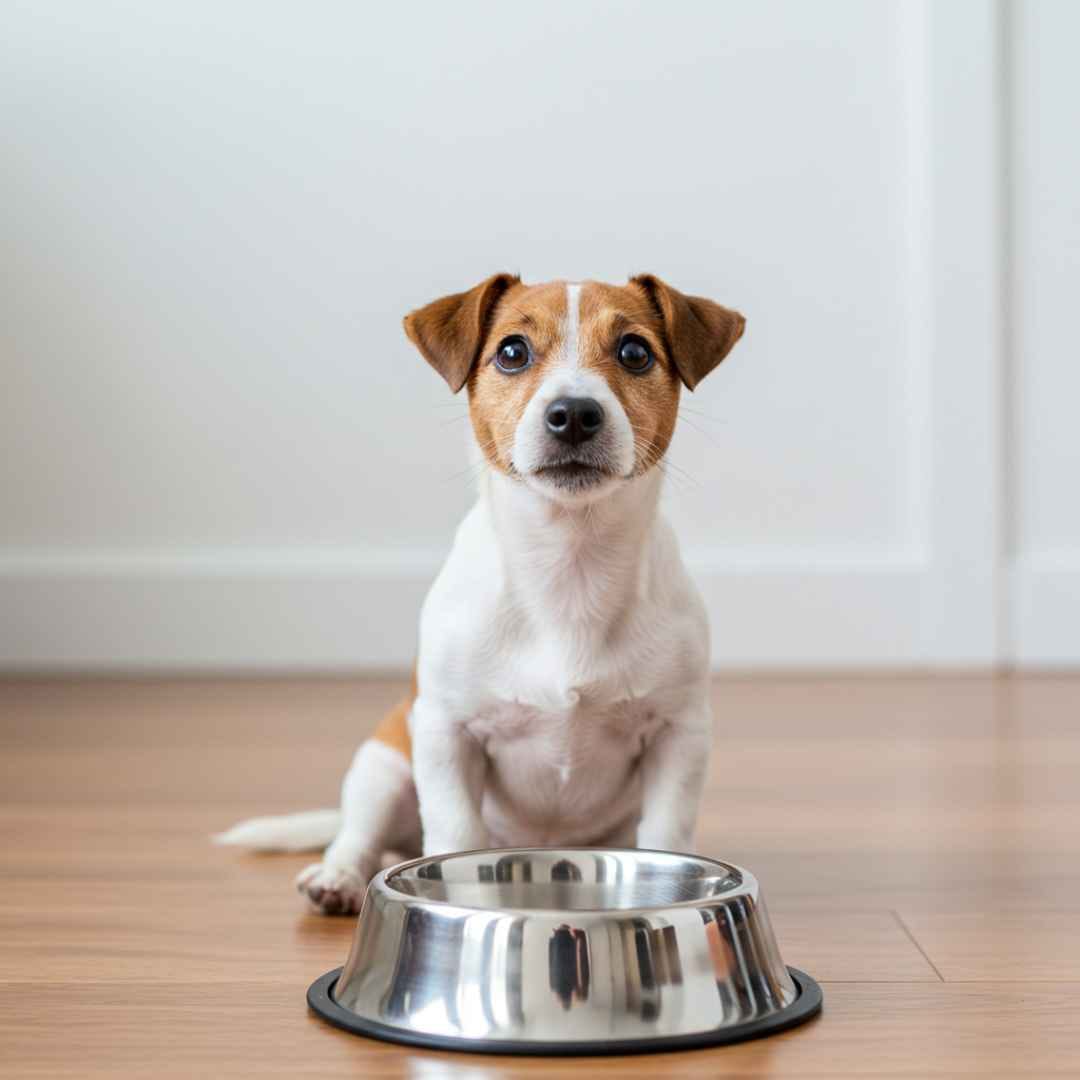
[Is Rachael Ray Dog Food Bad For Dogs?] Pet owners’ Reviews for this food are a mixed bag. There are anecdotal reports of dogs becoming sick (sometimes temporarily) after eating Rachael Ray Nutrish, but of course, there’s no way to know whether the food directly caused the illness. It’s always best to do your own research, consult your veterinarian before switching foods, and take online reviews with a grain of salt. Here are a few consumer pet owner reviews that have been shared:
“For some reason, my Beagle is very picky when it comes to dry dog food. I’ve tried several brands, and this is the only one he’ll eat straight out of the bag. He’ll sniff all the others and walk away. Can’t say I blame him — they really stink!”
“My perfectly healthy 7-year-old Lab is in the emergency vet as I type this, due to Rachael Ray Nutrish dog food. It made her sick, and my other dog wouldn’t even touch it. I think she knew something was wrong. I threw out the food right away, but over the next two days, my dog didn’t get any better.
I took her to the vet, and she’s now in kidney failure. After reading similar experiences, I contacted Chewy to have Rachael Ray products removed from their site.”
“Neither of my dogs had ever experienced strokes or health issues before switching to what I thought was a healthier dog food. Now both of them have had strokes — the most recent one was just yesterday. I’m heartbroken. After looking into it, I found that the Food and Drug Administration FDA is investigating an increased number of dog food linked to heart disease.”
For more verified Rachael Ray Nutrish reviews, check out ConsumerAffairs.
Rachael Ray Nutrish Recall History
Best Rachael Ray Dog Food Nutrish Alternatives
Rachael Ray Nutrish is one of the best-selling and most widely available dog foods on the market. Unfortunately, due to legal challenges and repeated recalls, this pet food does not meet our standards for quality. Here are some other quality, healthy alternatives to Nutrish on the market that do meet our high standards:
The Honest Kitchen – The Honest Kitchen is a natural food company that offers a variety of dry, wet, and dehydrated recipes. We also appreciate the brand’s transparency, as all ingredients (and their amounts) are clearly listed on the front of the packaging.
Open Farm Dog Food – All of their products are made in the USA and ethically sourced, which is why Open Farm is one of our favorite pet food brands. Their foods feature whole ingredients with no fillers or artificial additives, and they are delicious.
Freshpet – Freshpet is a fresh, refrigerated dog food line available in pet and grocery stores nationwide. True to their name, they use fresh ingredients in FDA-approved facilities to ensure your pet gets the best product possible.
Taste of the Wild – Taste of the Wild is an affordable pet food company with a variety of nutritious ranges, including limited ingredient foods, wet foods, and grain-free options.
Rachael Ray’s Dog Food Brand, Nutrish, Sued Over Glyphosate Contamination Claims
Rachael Ray Nutrish Dry
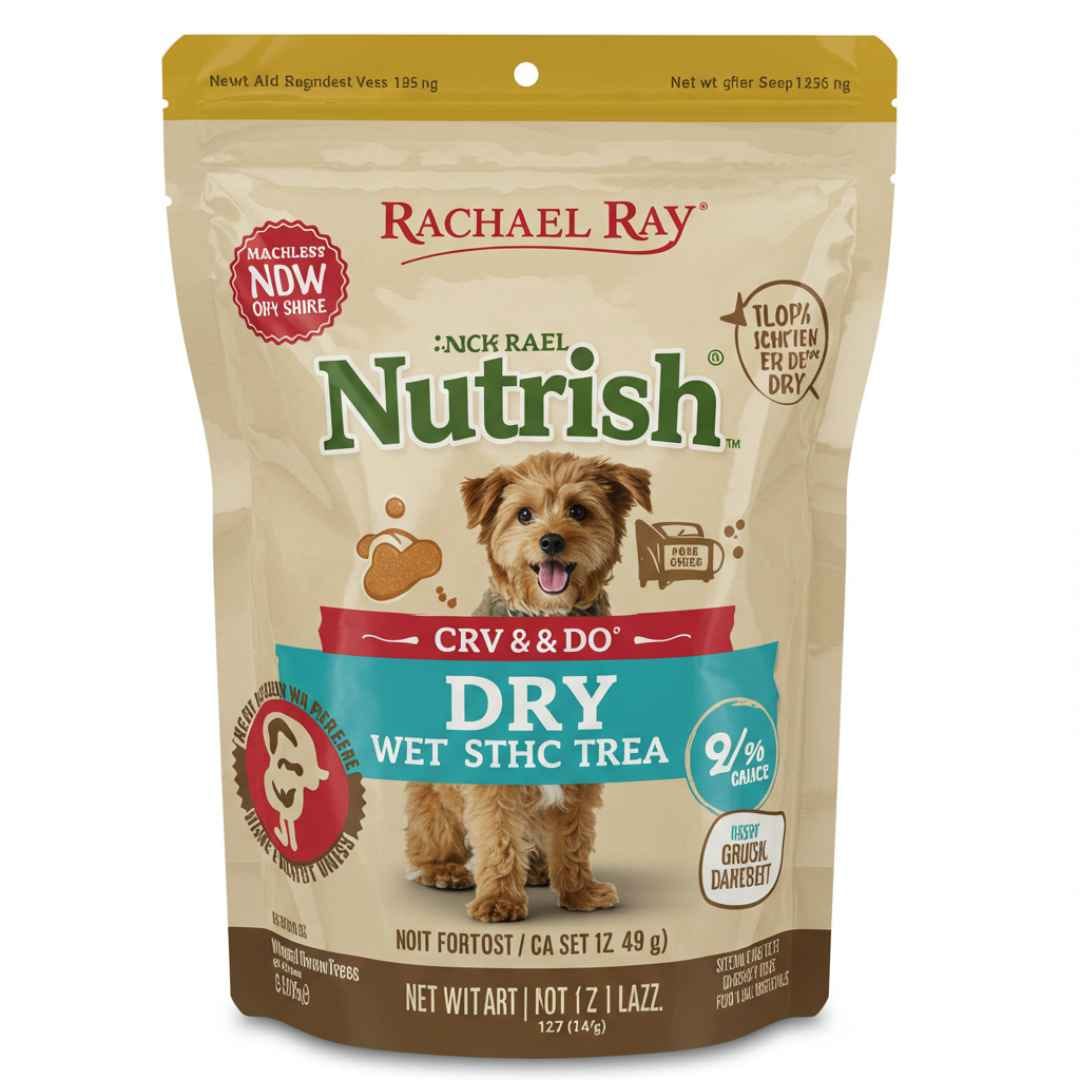
Score: 2.6/10
With a score of 2.6/10, Rachael Ray Nutrish Dry Dog Food is considered a high-risk dog food according to our evaluation criteria.
Ingredient Safety
Several issues arise regarding ingredient safety:
Ultra-Processed:
This line loses major points for being ultra-processed. Individual ingredients in dry dog food are heated multiple times during processing, which can significantly reduce vitamins, enzymes, amino acids, and phytonutrients. Highly processed foods have also been linked to higher mortality rates in many species.
Herbicide/High Pesticide Residues in Top 5 Ingredients:
The top five ingredients include foods known to carry high pesticide or herbicide residues. Peas and sorghum (unless organic) are often spray-dried with Roundup, leaving them with more glyphosate residue than other crops, even genetically modified ones. The antibiotic glyphosate kills beneficial gut bacteria and has been linked to cancer and other diseases.
GMOs in Top 5 Ingredients:
These recipes contain genetically modified ingredients among the top five, including corn and soybeans. GMO and Roundup-treated crops have limited safety studies, are nutrient-deficient compared to non-GMO foods, deplete soil nutrients, require more pesticides, and may contribute to bee die-offs.
Rice:
Arsenic contamination is a major concern because rice naturally absorbs arsenic, which can contaminate irrigation water. Arsenic exposure is linked to chronic health problems.
Natural Flavors:
This line relies on natural flavors to make processed foods more palatable. However, these flavors are often either MSG or animal digest, both of which have limited safety studies.
Ingredient Quality
There are also several concerns regarding ingredient quality:
High in Carbohydrates:
This line averages 40% carbohydrates, which is excessively high. High carbohydrate content often indicates lower-quality food, as starches are used to cut costs. Large amounts of starch can increase insulin levels, contribute to obesity, and negatively impact gut health. Here, protein is only 25%, roughly half the carbohydrate content.
Excessive Added Vitamins and Minerals:
The product loses points for excessive added vitamins and minerals, which often reflect low-quality dog food signs or overly processed ingredients. Ideally, nutrients should come from whole food sources. Excess vitamin D and copper can result from vitamin premixes.
Added Amino Acids:
The Turkey Recipe contains added amino acids. Foods low in animal protein often add amino acids to compensate, and two or more added amino acids can be a marker of low-quality ingredients.
Plant Protein:
Plant proteins are used as a cost-effective alternative to high-quality animal protein. Animal proteins are more digestible and provide a wider array of amino acids than plant-based sources.
Rachael Ray Nutrish Grain-Free Dry Dog Food
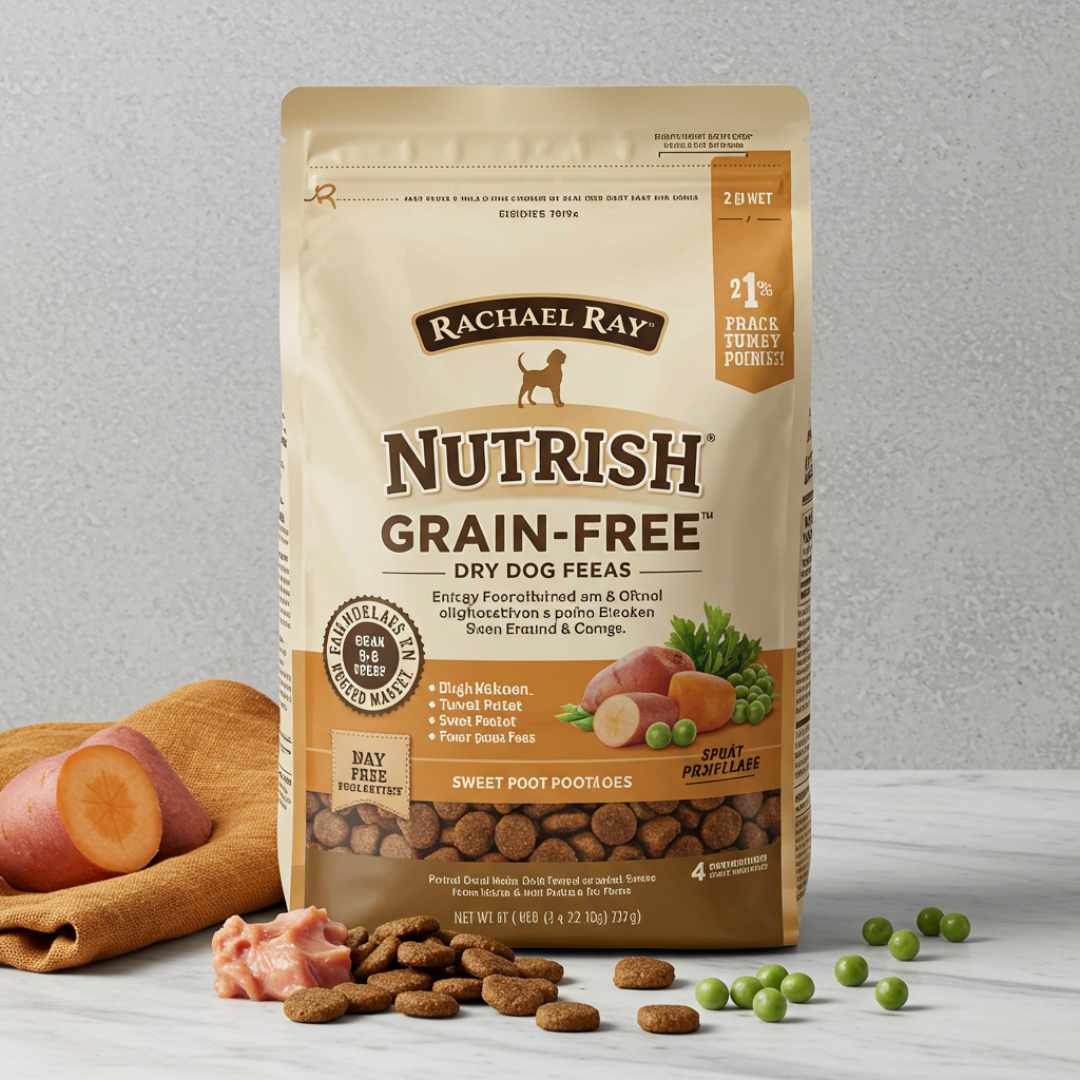
Score: 3.4/10
With a score of 3.4/10, Rachael Ray Nutrish Grain-Free Dry Dog Food is considered a high-risk dog food according to our evaluation criteria.
Ingredient Safety
Several issues arise regarding ingredient safety:
Ultra-Processed:
This line loses major points for being ultra-processed. Individual ingredients in dry dog food are heated multiple times during processing, which can cause significant losses of vitamins, enzymes, amino acids, and phytonutrients. Highly processed foods have also been linked to higher mortality rates in many species.
Herbicide/High Pesticide Residue Foods in Top 5 Ingredients:
The top five ingredients include foods known to carry high herbicide or pesticide residues. Peas, beet pulp, and sunflower meal (unless organic) are crops often dried with Roundup weed killer, leaving higher glyphosate residue than other crops, even genetically modified ones. In addition to killing beneficial gut bacteria, glyphosate in pet food has been linked to cancer and other diseases.
Rice:
Arsenic contamination is a major concern with rice because it naturally absorbs arsenic from the soil and water. Arsenic exposure is linked to chronic health problems.
Natural Flavor:
This line relies on natural flavors to make processed foods more palatable. However, natural flavors are often either MSG or animal digest, both low-quality ingredients with limited safety studies.
Ingredient Quality
Several concerns arise regarding ingredient quality:
High in Carbohydrates:
This line averages 38% carbohydrates, which is well above the recommended limit. Excessive carbohydrates often indicate a low-quality diet, as they are typically used to reduce production costs. High levels of starch can contribute to obesity, elevate insulin levels, and disrupt gut balance. A diet high in carbohydrates also tends to be low in protein, which is the case here, with only 26% protein.
Excessive Added Minerals and Vitamins:
This line falls short in ingredient quality due to the presence of excessive added minerals and synthetic vitamins. This usually suggests poor-quality or overly processed ingredients. Ideally, nutrients should come from whole food sources. An overuse of vitamin and mineral premixes — especially those containing copper and vitamin D — can also be a sign of low-quality dog food formulation.
Seed Oil:
Many recipes in this line include sunflower oil, a highly processed and inflammatory seed oil. It’s often used as a cheaper substitute for higher-quality animal fats and oils, which provide better nutrition.
Plant Protein:
Plant proteins are frequently used as a cost-effective alternative to animal protein. However, animal-based proteins are generally more digestible and provide a more complete amino acid profile. For optimal nutrition, animal protein sources are preferred.
Sugar (Glycerin):
Sugar is sometimes added to pet foods to enhance flavor, act as a preservative, or serve as a humectant. In this case, glycerin is the added sugar. It’s considered a low-quality ingredient that may contribute to intestinal disturbances, weight gain, and insulin spikes.
Rachael Ray Nutrish Super Premium Canned Dog Food
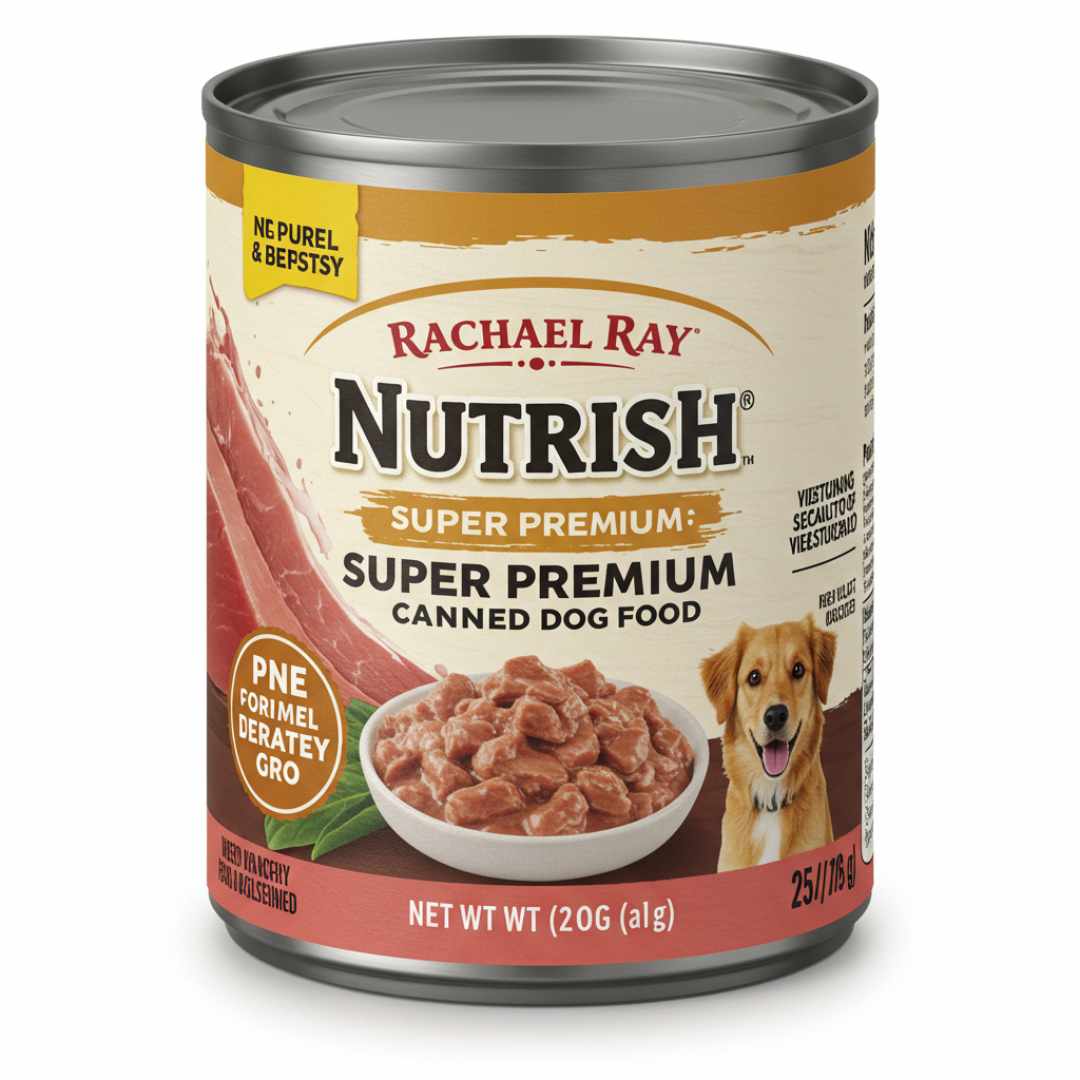
Score: 4.5/10
With a score of 4.5/10, Rachael Ray Nutrish Super Premium Canned Dog Food is considered a high-risk dog food according to our evaluation criteria.
Ingredient Safety
There are several concerns regarding ingredient safety.
Moderation:
This food loses points for being a cooked dog food. The cooking process involves high heat, which can destroy or reduce essential nutrients such as vitamins, minerals, enzymes, phytonutrients, and amino acids.
Top 5 Ingredients – High in Pesticides/Herbicide-Resistant Foods:
One of the top five ingredients in this recipe, peas, is known to carry high levels of pesticide and herbicide residues. Crops sprayed with Roundup tend to have higher glyphosate residues than other crops — even genetically modified ones. Glyphosate in pet food is an antibiotic that can kill beneficial gut bacteria and has been linked to cancer and other health issues.
GMO Ingredients:
One recipe in this line relies on potatoes, a known GMO ingredient. Genetically modified and Roundup-treated crops have limited long-term safety studies and are often less nutrient-dense compared to non-GMO foods. Additionally, GMO crops can deplete soil nutrients, require more pesticide use, and may contribute to environmental issues such as bee die-offs.
Rice:
Arsenic contamination is a major concern with rice, as it naturally absorbs arsenic from the soil and water in which it grows. Chronic exposure to arsenic has been linked to several long-term health problems.
Menadione (Vitamin K3):
Menadione, a synthetic form of vitamin is not necessary in dog food and has been associated with immune system dysfunction, liver toxicity, oxidative cell damage, and allergic reactions.
Natural Flavor:
Many recipes in this line use natural flavors to enhance palatability. However, these are often made from animal digest or MSG, both of which are low-quality additives with limited safety research.
Artificial Colors:
Ingredients such as iron oxide, titanium dioxide, and caramel color are added to improve visual appeal, often masking the natural grayish hue of the ingredients. These artificial colors have been linked to potential health risks.
Ingredient Quality
When it comes to ingredient quality, several issues stand out:
High in Carbohydrates:
This line averages 20% carbohydrates (calculated on a dry matter basis), which is considered high for canned dog food. Excessive carbohydrates often indicate cost-cutting and can lead to obesity, increased insulin levels, and an imbalanced gut microbiome.
Excessive Added Vitamins and Minerals:
This line also loses points for including excessive added minerals and synthetic vitamins, a sign of over-processing and low-quality ingredients. Ideally, nutrients should come from whole food sources. Overuse of vitamin and mineral premixes — especially those containing copper and vitamin D — can signal poor formulation.
Unnamed Animal Ingredients:
Some recipes include unnamed animal ingredients, such as generic fish oil with no specified source. Unnamed animal ingredients are often inexpensive, lower-quality byproducts that can come from mixed or unknown animal sources.
Plant Protein:
Plant-based proteins are used as cheaper substitutes for animal proteins. However, animal proteins are more digestible and offer a more complete amino acid profile. For optimal nutrition, animal protein sources are preferred.
Rachael Ray Nutrish Premium Pet Canned
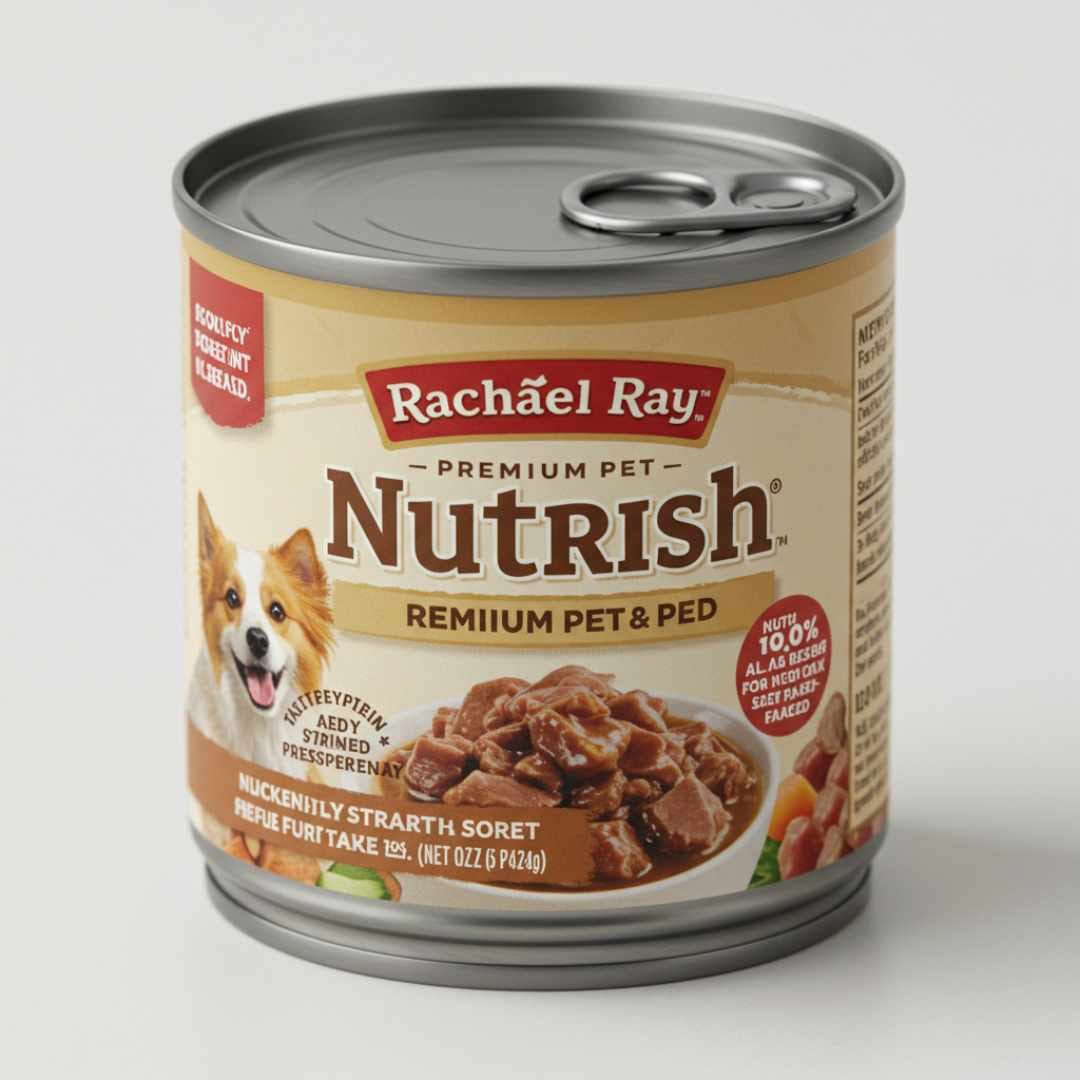
Score: 5.4/10
With a score of 5.4/10, Rachael Ray Nutrish Premium Pet Canned Dog Food is considered a moderate-risk dog food, according to our evaluation criteria.
Ingredient Safety
There are several concerns regarding ingredient safety.
Heavily Processed:
Canned foods undergo heating both before and during the canning process, which causes significant losses of essential nutrients such as vitamins, enzymes, phytonutrients, and amino acids. Highly processed foods have also been associated with increased mortality rates in multiple species.
Herbicide/High Pesticide Residue Foods in the Top 5 Ingredients:
The recipes in this line contain ingredients among the top five that are known to carry high pesticide or herbicide residues. Peas and apples (unless organic) are commonly treated with Roundup weed killer, leaving them with higher glyphosate and herbicide residues than many other crops — even genetically modified ones.
Glyphosate exposure acts as an antibiotic that can kill beneficial gut bacteria and has been linked to cancer and other health issues.
GMO Ingredients:
One recipe includes canola oil, a known genetically modified (GMO) ingredient. It is also a highly processed seed oil with inflammatory properties. There are limited safety studies on genetically modified and Roundup-treated crops, which are often less nutrient-dense than non-GMO foods.
Furthermore, GMO crops can deplete soil nutrients, increase pesticide dependency, and contribute to environmental issues such as bee population decline.
Ingredient Quality:
There are several concerns regarding ingredient quality.
High in Carbohydrates:
This line averages 23% carbohydrates on a dry matter basis, which is considered high for a canned dog food. Excessive carbohydrates often indicate a lower-quality food, as they are typically used to reduce production costs. High levels of starch can contribute to obesity, elevate insulin levels, and disrupt gut balance.
Excessive Added Vitamins and Minerals:
This line also loses points for including excessive amounts of added vitamins and minerals. Such formulations usually reflect over-processed ingredients or lower-quality raw materials. Ideally, these nutrients should be derived from whole food sources. Over-supplementation—especially of vitamin D and copper—can occur due to the use of vitamin premixes, potentially leading to nutrient imbalances or toxicity.
Is Rachael Ray’s Food Good For Dogs
Real Dog Owners Share Their Experiences with Rachael Ray Nutrish
Rachael Ray Dog Food Review: Detailed Analysis, Ratings, and Customer Feedback
Who makes Rachael Ray dog food
Conclusion: Is Rachael Ray Dog Food Bad For Dogs
In conclusion, Rachael Ray Nutrish Dog Food has raised several concerns among pet owners. The brand has faced multiple lawsuits alleging contamination with potentially harmful substances, such as glyphosate exposure. Additionally, some of its grain-free formulas have been associated with dilated cardiomyopathy (DCM) in dogs, possibly linked to specific ingredients.
Many pet owners continue to question whether Rachael Ray dog food is safe, citing concerns over ingredient quality, potential allergens, and reports of adverse reactions — including digestive and heart-related issues.
If you’d like to learn more or share your experience with Rachael Ray dog food, feel free to contact us or leave a comment below.
Q1.What Is the Rachael Ray Dog Food Complaint?
Ans. Rachael Ray Pets Class Action Review:
Why: Krikorian alleges that Post Consumer Brands falsely advertises Rachael Ray Nutrish pet food products as being preservative-free.
Where: The Rachael Ray Dog Food class action lawsuit was filed in a California federal court.
Q2.Is There an Absolute Best Food to Feed Your Dog?
Ans. The best foods for dogs include the following:
Turkey (lean, cooked)
Beef (lean cuts, cooked)
Eggs (cooked)
Lamb
Chicken (cooked and unseasoned): A surefire favorite for most dogs — high in protein, low in fat, and delicious.
White or brown rice
Oatmeal
Q3.What’s Going On With Rachael Ray Dog Food?
Ans. A newly proposed class action lawsuit claims that Rachael Ray Nutrish pet food is deceptively advertised and marketed as “natural,” even though many products allegedly contain artificial ingredients in dog food.
Q4.Is Rachael Ray Dog Food Being Recalled?
Ans. There have been no recent, widespread recalls of Rachael Ray dog food. However, past concerns and lawsuits have surfaced — including claims of glyphosate contamination in certain products and a possible dog food linked to heart disease, potentially due to taurine deficiencies in some formulas.
Q5.What Food Is Not Good for Dogs?
Ans. The following foods are toxic and should never be given to dogs:
Coffee, chocolate, and caffeine: Contain methylxanthines, which are highly toxic to dogs.
Macadamia nuts
Xylitol (artificial sweetener)
Onions, garlic, and chives
Raisins and grapes
Yeast dough
Alcohol (including wine)
